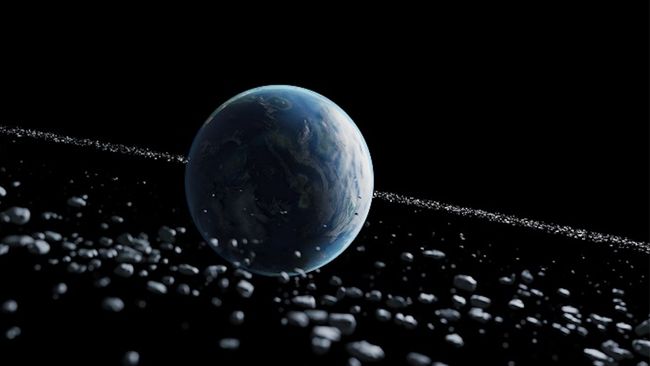New Study Suggests Earth Had Saturn-Like Rings 466 Million Years Ago
The temporary structure likely consisted of debris from a broken-up asteroid.
New evidence of an early ring around Earth has been discovered by scientists though this may have been in the planet’s distant past 466 million years to be precise. This debris ring probably persisted for tens of millions of year and perhaps played a part in global cooling, resulting in the earth being nonexistent in the coldest period in the last 500 million years.
The paper involves data obtained from the investigation of 21 craters all over the world which are believed to originate from a large asteroid debris that fall down during the Ordovician period 488—443 million years ago, which is considered to be the time when the Earth experienced a sharp rise in the rate of asteroid impacts.
Working with planetary scientist Andy Tomkins of Monash University in Australia, the team reconstructed the movements of the tectonic plates of the Earth and depictions of the craters’ original locations. All the craters were located on continents that are within 30 degrees of the equator something which has led the researchers into deducing that all these craters were as a result of debris from a single asteroid that disintegrated after just missing the earth.
“On average, the asteroids impact earth at any latitude and are not restricted like we observed with craters on the moon, Mars, and Mercury under normal circumstances,” Tomkins said in The Conversation. ‘The probability that all of the 21 craters would form near the equator is improbable unless all of them are correlated’.
The orientation of the craters near the equator creates a pattern that can be likened to debris ring around the Earth just like in the case of Saturn, Jupiter, Uranus and Neptune. They have concluded that the odds of these craters having being formed by normal impacts of asteroids are as low as one in a quarter of a million, according to the study.
Scientists suppose that the asteroid that formed the ring measuring was about 7. About 7 miles (12:5 kilometers) wide if it were a rubble pile, a little less than if it were solid. It is assumed that after the separation the latter passed through the equator and formed a debris ring around the Earth. From millions of years, debris of the ring has been falling on the earth and has caused increased number of impacts indicated in the meteorite layers.
”This material from the ring gradually fell to Earth leading to observed greater impact in meteorite during that period,” Tomkins said in a university interview. They contain a large amount of meteorite debris from this age settled on layer of sedimentary rocks.
This was a particular category of meteorite and the limestone containing it was found in regions across Europe, Russia and China thus suggesting that it had been subjected to even less cosmic rays than most meteorites found today. These deposits also point to multiple occurrences of tsunamis in the Ordovician period which the researchers suggest are as a result of the splitting of the asteroid.
Birger Schmitz, Lund University in Sweden, said in New Scientist that the study provides a new and creative idea to account for the specific phenomena but he underlined that such evidence which can prove that the Earth once had rings could be obtained only through additional data. While it is possible to study the crystals in older meteorites found on Earth, a shared signature in asteroid grains across the craters might offer the necessary proof, Schmitz said.
In case Earth had a ring system it might have been substantially affecting the climate of the planet. The ring would have created a shade on some parts of the world resulting in a negative albedo and bringing forward theories of global cooling, because of earth axial tilt. The researchers did suggest that such web-based advertising has precise effects but were indecisive, to an extent.
About it, they assume, that this event could be associated with the Hirnantia Ice Age, the observed as the most cold epoch during the last 500 million years occurred about 465 million years ago.
”We never knew how the ring would have looked to the naked eyes from Earth, how much light it was going to obstruct or how much debris would have been required to cool down the Earth,” said Tomkins to New Scientist.
This research is described in a paper published Monday (Sept. 16) in the journal Earth and Planetary Science Letters.
Do not forget to share your opinion with us to provide you with the best posts !




0 Comments